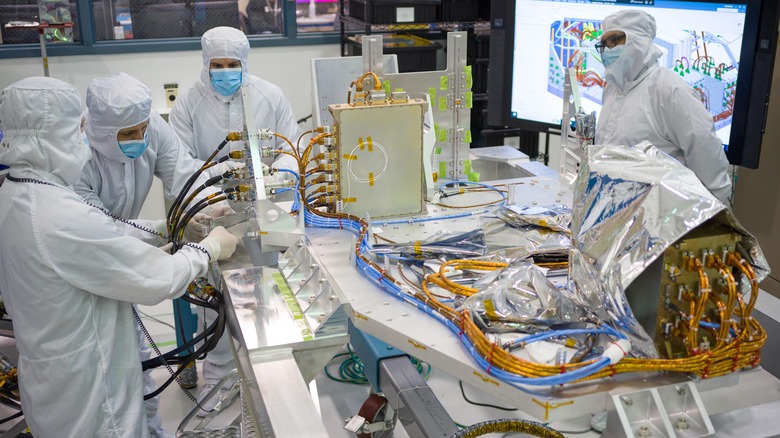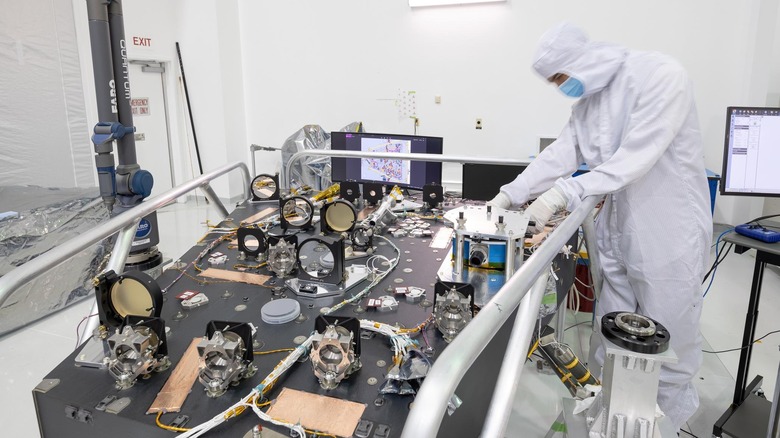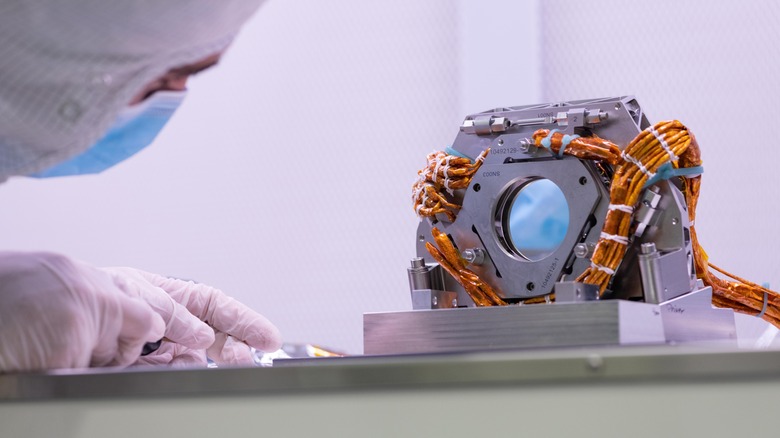How This Cutting Edge Instrument Will Help NASA Spot Hidden Exoplanets
From the James Webb Space Telescope to the Transiting Exoplanet Survey Satellite (TESS), current telescopes have allowed us to detect more than 5,000 exoplanets to date. And with plans to launch in 2027, NASA's Nancy Grace Roman Telescope will help us learn more than ever before about topics like dark energy. One of its biggest focuses will be on exoplanets — planets outside our solar system — both on discovering more of them and on surveying the total number we can expect to find in the galaxy.
There are several ways that telescopes can be used to spot exoplanets. The first and most obvious way is to point the telescope in the direction of a suspected exoplanet and try to observe it directly, which is called direct detection. But this is extremely difficult to do, because exoplanets are so small and dim compared to stars, so it happens rarely.
Another method used by instrument's like NASA's TESS is the transit method, in which the light coming from a star shows a dip in brightness when a planet passes in front of it. By looking at the timing and degree of this dip, researchers can infer information about the planet. Then there's the radial velocity method, in which stars are seen to wobble very slightly due to the gravity of the planets orbiting around them.
In all these cases, astronomers are looking for very small changes to distant stars, so they need very sensitive instruments. And that's where the Roman telescope enters the picture.
The Nancy Grace Roman Space Telescope's coronagraph
On board Roman will be a special instrument called a coronagraph which can help in the discovery of exoplanets. This instrument — roughly the size of a baby grand piano — has a special attachment which blocks out light from a star. As counterintuitive as that may sound, it's actually very important because if you want to see a relatively faint object like a planet, you need to block out most of the light from a much brighter object like the star around which the planet is orbiting.
By putting a mask in front of the telescope, researchers can block out light from bright stars and directly image the planets around them. This opens up the method of direct imaging, which is incredibly difficult to do otherwise. The telescope instruments will also be able to split the light coming from exoplanets into a spectrum, allowing scientists to determine the gases which are present in an exoplanet atmosphere.
The coronagraph instrument includes very important components in the form of two flexible mirrors, which can have their shape distorted by thousands of tiny actuators. This flexibility means that the mirrors can account and compensate for any tiny flaws in the hardware that would otherwise distort the data, making the instrument even more accurate. The mirrors can also allow for diffraction of the light coming from a star, making the readings more sharp.
Testing out the coronagraph
To get the coronagraph ready for use in the Roman telescope, it needs to be thoroughly tested for any tiny flaws as it is extremely difficult to perform maintenance on a telescope once it has been launched into space.
To help with testing Roman's coronagraph, engineers at NASA's Jet Propulsion Laboratory have been using a 3D digital model of the instrument, accessed through an augmented reality headset. This let them see the instrument in real space even before it has been assembled.
"We learned a lot from that exercise," said JPL engineer Gasia Bedrosian. "We could get a sense of how tight the access would be at certain points of integration by literally laying on the floor and getting visuals of under the instrument. It showed us when it would be beneficial to lift the entire instrument with a crane, or if we were going to need a specialized tool to do our work at that angle. It helped make a lot of our plans safer and simpler."
Bedrosian was in charge of creating the assembly plan for the instrument, working out how to get all the pieces in place at the right time and in a certain order, so it is ready for testing before the big launch day.
"It's exciting to finally start putting all the pieces together," said Bedrosian. "It's definitely a delayed gratification, because we've spent so long preparing. But now that we're here and my team members are talking about the hardware arriving, I can hear the excitement in their voices."


